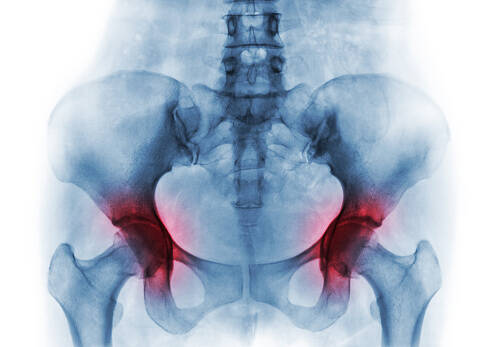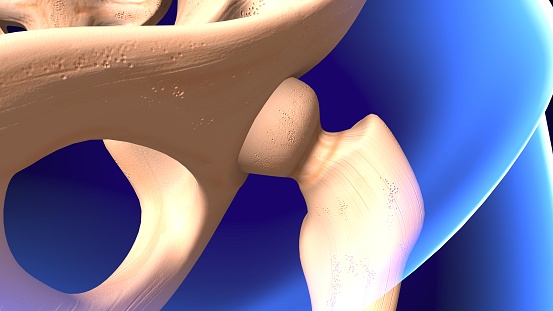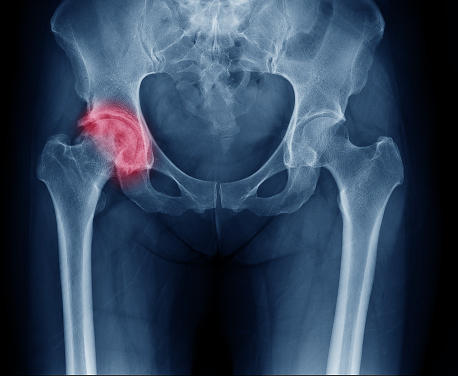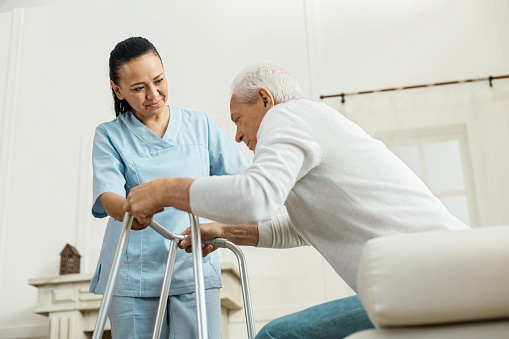- ortopedickecentrum.sk - Hip joint
- wikiskripta.eu - Coxarthrosis
- physioclinic - Hip arthrosis - coxarthrosis
- koxartroza.sk - Coxarthrosis - arthrosis of the cartilage of the hip joint
Does Grade 4 coxarthrosis end in hip replacement?

The degenerative process affecting the hips is called coxarthrosis. This disease not only disrupts the structure in the lumbar region, but also causes ankylosis of the articular joint, inequalities in the length of the lower limbs and leads to a disturbance in the stability of the spinal axis. It significantly affects the patient's life. Ultimately, a total hip arthroplasty (TEP) is necessary.
Article content
The hip joints, along with the knee joints, are weight-bearing joints. This means that they are the most heavily weight-bearing joints and therefore the most commonly affected. Disorders and degeneration of these joints seriously affect the spinal axis, body posture and gait.
What does the hip joint consist of?
The hip joint (articulatio coxae) connects the thigh bone (femur) to the pelvis. It is formed by the articular head at the end of the femur (caput femoris), which fits into the joint socket on the pelvic bone (acetabulum).
The edge of the acetabulum is formed by a cartilaginous rim (labrum acetabuli).
The entire joint is reinforced by the capsule. This extends from the edges of the acetabulum and attaches to the femur. The lig. iliofemorale, which is also the strongest ligament in the entire human body, reinforces the entire joint from the front.
There are two more ligaments, the lig. ischiofemorale and the lig. pubofemorale, from behind and below.

Hip mobility
On the basis of its anatomical proportions, it is already clear that it is a very rigid joint. Mobility is somewhat limited in it.
Nevertheless, it is a mobile joint and can perform 5 basic movements:
- flexion - extension
- extension - extension
- abduction - abduction
- adduction - adduction - adduction
- rotation - rotation
What happens in a hip joint affected by a degenerative process?

The degenerative process in the articular cartilage itself can be triggered by many mechanisms ranging from genetic predisposition to developmental anomalies, various diseases and injuries.
The action of these factors leads to a disruption of the stability of the dynamic balance in the joint, to its destruction and ultimately to its dysfunction.
In a joint affected by an arthritic process, the articular cartilage is destroyed and ceases to regenerate. The initial changes in the joint are metabolic and the patient experiences no discomfort.
Cytokines that inhibit anabolic processes predominate. Destructive catabolic processes are multiplied. Their effect is to damage the underlying bone mass - the bone matrix.
The cartilage of the hip is destroyed, becoming thinner, and at the same time cracks form in the joint. This results in unevenness of the joint surfaces and a gradual narrowing of the joint space.
Due to stresses, such as body weight, joint deformation begins. Osteophytes (bone growths) form as a result of compensatory mechanisms.
The joint enlarges, adhesions form, deformities multiply and it becomes stiff, immobile and, in the later stages of the disease, painful.
Stages of the arthritic process
There are 5 stages of the arthritic process based on changes in the hip joint. The first stage of the disease is characterised by changes that are not yet visible and do not inherently limit the patient. The second and third stages are characterised by varying degrees of deformity and limitation.
The fourth stage is the final stage, when the deformation of the joints is already complete with their pathological position. It leads to disability and disability retirement with the need for artificial hip replacement.
- Stage I - takes place at the level of metabolism, means the predominance of catabolic processes
- Stage II - characterised by unevenness of the articular surfaces and narrowing of the articular cleft
- Stage III - means the initiation of sclerotization with osteophyte formation and visible deformities
- Stage IV - final stage, deformities cause pathological bone position with change in length
How does coxarthrosis affect the patient's life?

The destructive process of the hips itself is initially manifested by morning stiffness in the hip and pelvic area. The patient has to move around in order for it to stop. Gradually it escalates and becomes regular.
This is an initial symptom to which people do not attach much importance and do not even seek medical help.
This is, of course, preceded by changes at the level of metabolism, of which the patient is unaware. At this time, with an incorrect lifestyle and insufficient exercise, the pathological process slowly progresses. Over time, it results in a disease with typical manifestations.
Habits such as alcohol, smoking, overeating and lack of exercise accelerate the process.
TIP: Arthritis and the importance of diet in prevention and treatment
Symptoms of arthritis affecting the patient's life
Osteoarthritis, whether in the hip or another joint, is characterised by pain.
But often this is not the final solution, as the arthritic process can progress with improper treatment or non-compliance with the treatment regimen.
Pain in the affected area at the beginning of the disease occurs only after greater physical exertion. They are tied to movement and are irregular.
Its regularity and occurrence at rest indicate further progression of the condition. At a higher stage, coxarthrosis also causes hip pain at night.
Hip pain from the spine?
Read more in the article on vertebrogenic algic syndrome.
It is not only the pain that causes limitation of mobility in the joint, but also other changes such as sclerotization, osteophyte and adhesion formation. These changes make the joint stiff and immobile.
The musculoskeletal system is a single unit. Any damage to one of the parts of the musculoskeletal system interferes with its proper function. The greatest difficulty in movement in hip arthritis is when changing position from sitting to standing and vice versa.
Limitations can also be observed when bending over, when it is easier to bend the knee joints.
In the later stages of coxarthrosis, when the joints are deformed and the lower limbs are unequal in size, the patient has difficulty maintaining an upright posture. Unevenness in the pelvic region causes an uneven posture. This is associated with uneven loading of the hips and also uneven posture of the spine.
This manifests itself in back pain and progressive curvature.
TIP: Knee arthritis is slowly but surely destroying your knee joints
Pelvic and axial posture in coxarthrosis
As mentioned above, deformities in the hip joint cause changes in the posture of the pelvis and spine, and therefore in the posture of the body overall. Incorrect and uneven posture makes it difficult for patients not only to walk and initiate movement, but also to stand and maintain balance.
Basic changes in pelvic posture in the table
| Pelvic and spinal posture | Result |
| Increased pelvic anteversion |
|
| Oblique position of the pelvis |
|
| lordosis of the spine |
|
Total hip arthroplasty. When is it imminent?
Total hip arthroplasty is indicated when the articular cartilage is completely destroyed, mainly in elderly patients whose condition causes severe pain that is difficult to control with medication and severely restricts normal movements.
What does the patient expect in a hip replacement?
Hip replacement is a surgical procedure that is performed under general anaesthesia. The arthritic cartilage in the femoral neck (the area under the femoral head) must be cut before the titanium joint replacement is inserted.
In practice, the femoral head is removed and replaced with a titanium head, which consists of a shank on which the ceramic head sits.
The femoral head is inserted into a socket, also made of titanium, and a polyethylene insert is inserted between the two. The acetabulum must still be prepared before the endoprosthesis is fully fitted and the titanium socket inserted. This is done using a cutter.
After the endoprosthesis is fitted, the doctor still checks the mobility. After its final repositioning, it is ready to serve the patient where his own joints have failed him.
Interesting resources










